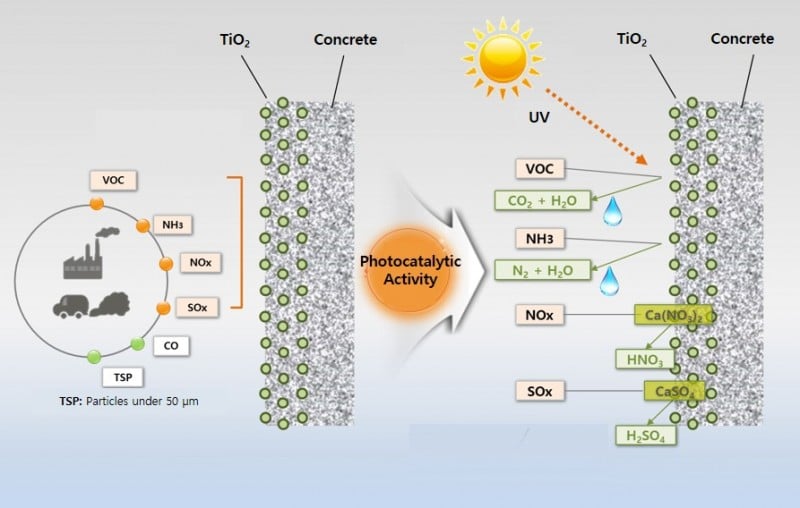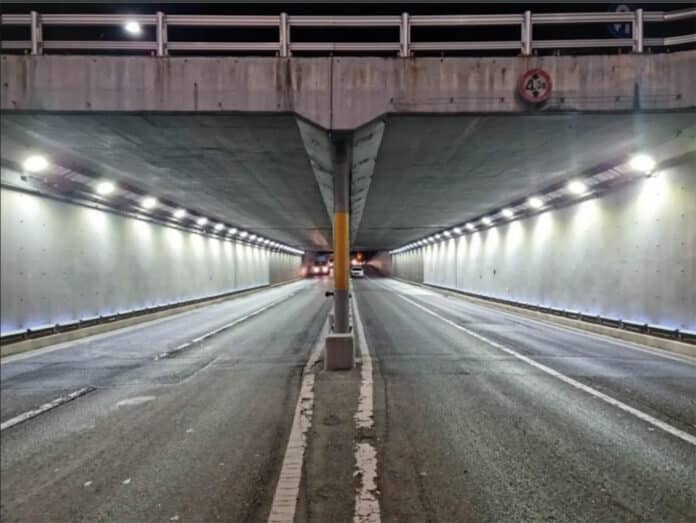Urbanization has brought about a lot of challenges, one of which is transportation. As cities continue to grow, the need for efficient and safe transportation becomes increasingly important. One solution that has been gaining popularity in recent years is the implementation of tunnel transport systems. These systems offer a unique way to move people and goods throughout a city, which could lead to reduced traffic congestion, improved efficiency, and a more sustainable future.
However, compared to other road environments, underground tunnels have worse air quality due to poor air circulation. To address this issue, engineers at the Korea Institute of Civil Engineering and Building Technology (KICT) have developed photocatalytic concrete that can effectively remove fine particulate matter on roads.
Improving internal air quality in road infrastructure in the best way possible can be achieved by pre-emptively removing fine particulate matter precursors generated by automobile exhaust gases. Recently, the application of construction materials that make use of photocatalysts with the capability to remove harmful substances has been in the spotlight as a solution to fine particulate matter pollution.
A photocatalyst is a semiconducting material that can break down pollutants through a photocatalytic reaction; when exposed to light, photocatalysts produce reactive oxygen species (ROS) with strong oxidizing power. The ROS converts the precursors of fine particulate matter, such as nitrogen oxide, sulfur oxide, etc., into harmless substances through a photocatalytic reaction, which helps suppress the generation of air pollutants.
Although photocatalysts show excellent performance in removing toxic substances from the air, they have yet to be used in construction materials due to high manufacturing costs. As a result, KICT’s Green Construction by Photocatalyst Research Group (GCP Research Group) has developed a photocatalytic concrete using key technologies they have been developing since 2018 that allows cost-efficient mass production.

The new air-scrubbing concrete was tested on the inner walls of the Banpo Underground Road Tunnel in Seoul, South Korea. Artificial lights were installed on the wall of the underground road tunnel, allowing the photocatalytic function to work even underground where natural light does not reach. Researchers found that the nitrogen oxide (NOx) concentration levels dropped by approximately 18% over a period of 24 hours. And the end product of the reaction was salting that formed due to the calcium content in photocatalytic concrete.
The outcomes also demonstrated that the products of photocatalytic degradation were effectively washed away by rain. The team says the process should allow the photocatalytic function to last permanently without the need for maintenance.
The team plans to continue research to establish various photocatalytic performance evaluation certification systems, aiming to facilitate the commercialization and distribution of the technology. Currently, they are conducting a comprehensive trial in collaboration with authorities in Gyeonggi-do Province to demonstrate the effectiveness of photocatalytic construction technologies.
“Construction technology using photocatalysts can have an immediate effect on reducing fine particulate matter in the nation’s living environment,” said Dr. Jong-Won, Kwark, head researcher of the research. “We plan to build a system of cooperation with local governments and public corporations to expand trial demonstrations to other sites to achieve commercialization and distribution with practical effects.”
Journal reference:
- Yoon, Hyunno, Joonho Seo, Seonhyeok Kim, Daeik Jang, Jinho Bae, and Haeng-Ki Lee. NOx-removal and Sound-absorption Performances of Photocatalytic Porous Concrete Prepared by Various TiO2 Application Methods. KSCE Journal of Civil and Environmental Engineering Research, 2023; DOI: 10.12652/Ksce.2022.42.2.0163
